Following on from last week’s post about the house, today we visit the beautiful gardens of the Palacio Fronteira in Lisbon.
The most famous part of the gardens is undoubtedly the tile-lined water tank.
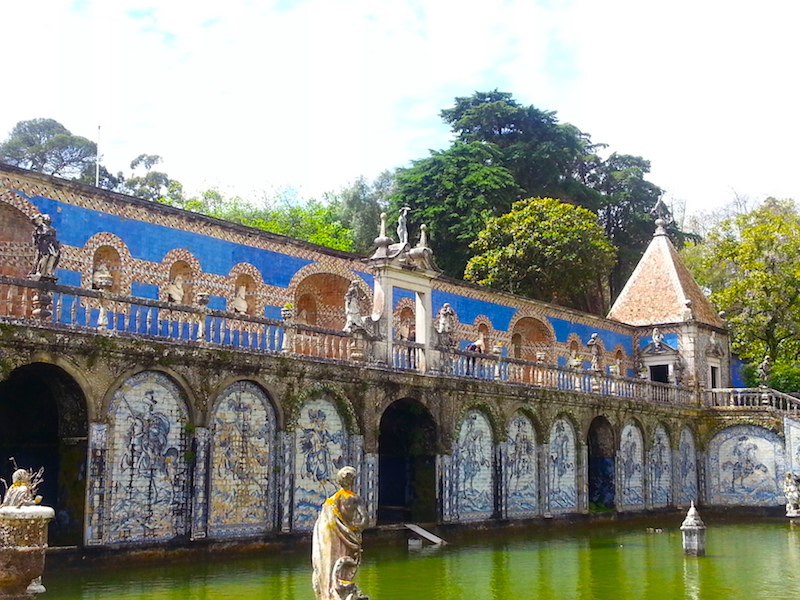
The water tank at the Palacio Fronteira, Lisbon, in April, 2016.
The upper walk is known as the Gallery of Kings, after the busts of Portugal’s monarchs set in the niches of the blue-tiled wall.
I took care to photograph the only female bust among them, that of Portugal’s first queen regnant, Doña Maria I, AKA Maria a Loca (Mad Mary), who reigned from her father’s death in 1777 until her own in 1816. Tragically, she lost her mind after the deaths of her husband and eldest son in the late 1780s. Her second son, the future Dom João VI, ruled as regent from 1792.
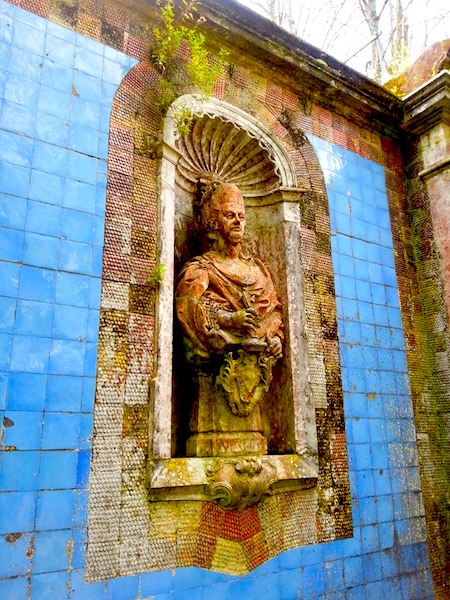
Bust of Doña Maria I (1734-1816), Queen of Portugal and the Algarves, later of the United Kingdom of Portugal, Brazil, and the Algarves in the Gallery of Kings in the gardens of the Palacio Fronteira. Photographed in April, 2016.
From the Gallery of Kings, you get a panoramic view of the garden façade of the house, as well as the formal parterre, which is the largest area of the gardens.
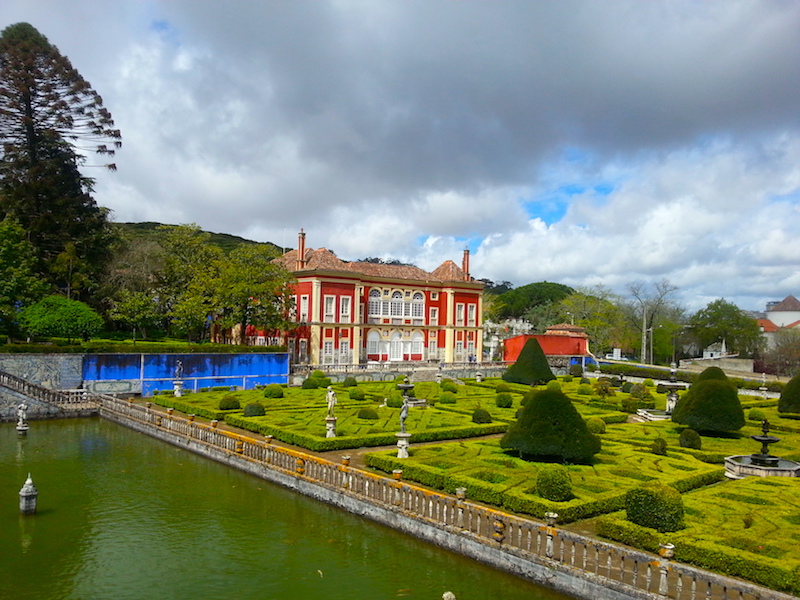
View of the house and formal parterre from the Gallery of Kings at the Palacio Fronteira, April, 2016.
The parterre is punctuated by statuary and several fountains. From the terrace in front of the house, there is a fine view towards Lisbon.
To the left of the house as seen in the photo above, there is an elevated, planted terrace above a blue wall. It’s called the Jardim de Vénus (Garden of Venus), so-named for the fountain at its centre, which features a statue of the goddess.
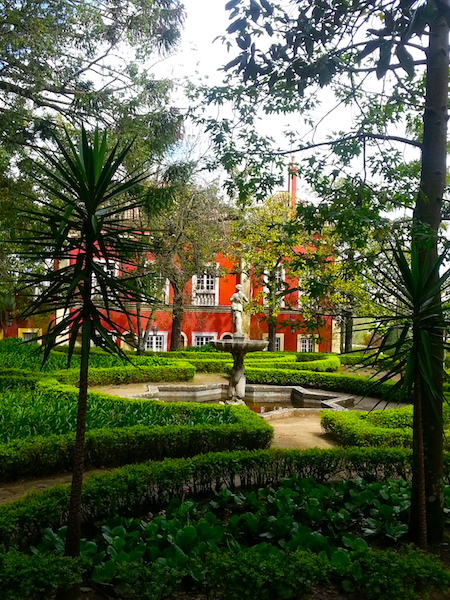
The fountain in the Garden of Venus at the Palacio Fronteira, April, 2016.
The Garden of Venus is well-shaded by numerous trees. Between it and the house lies what seems to be a sunken terrace, which is in fact level with the ground floor of the house. It appears to be still in use, to judge by the furniture.
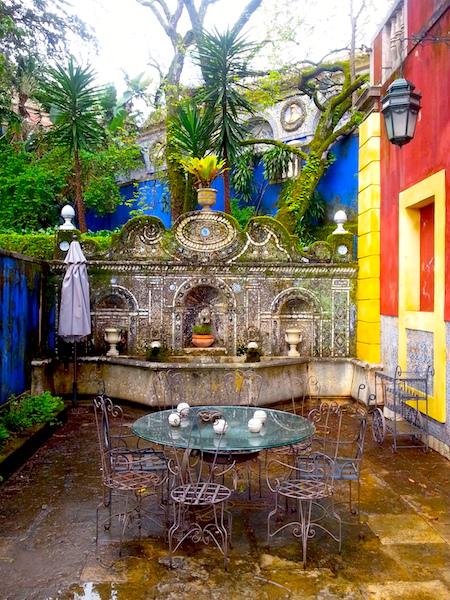
The sunken terrace at the Palacio Fronteira, April, 2016.
The fountain at the back is known as the Fonte da Carranquinha.
At the far end of the Garden of Venus is a grotto, called the Casa do Fresco, literally the Cool House.
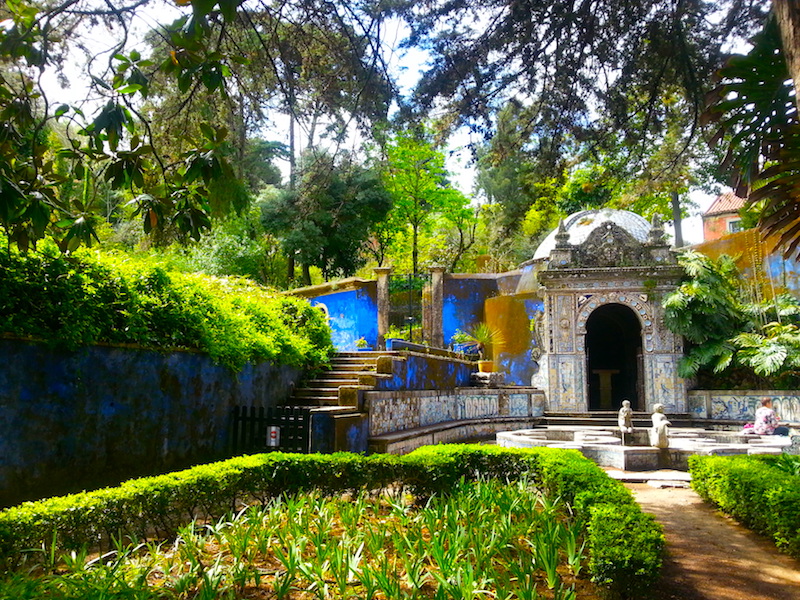
The Casa do Fresco at the Palacio Fronteira, April, 2016.
The weather in April, 2016, when I was there, was lovely and temperate, but I imagine the interior of the grotto would be a great escape from the heat of high summer.
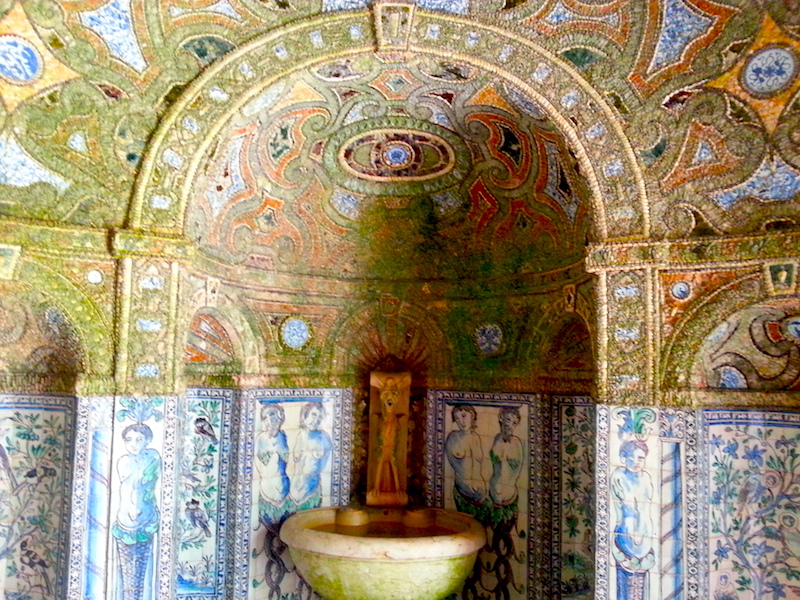
An interior view of the Casa do Fresco, Palacio Fronteira, April, 2016.
There is also a modern swimming pool which visitors are not permitted to see.
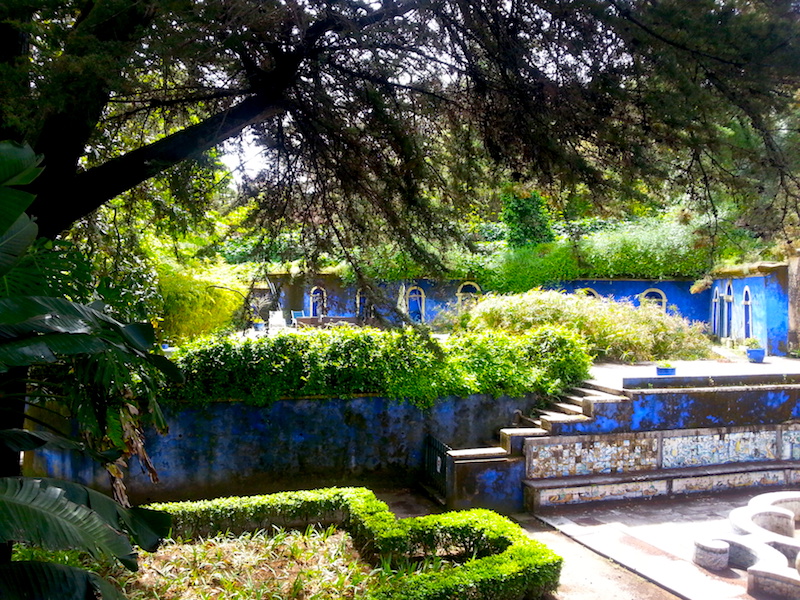
A distant view of the pool area from the rear terrace of the house, Palacio Fronteira, April, 2016.
The rear terrace of the house gives a clear view of the scalloped pool in front of the Casa do Fresco.
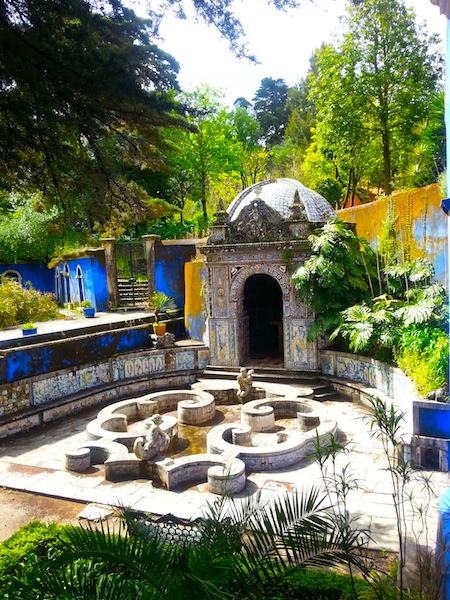
The scalloped pool in front of the Casa do Fresco, Palacio Fronteira, April, 2016.
There is also a modern garden, which looks to have been laid out in the late 20th century. The less said, the better.
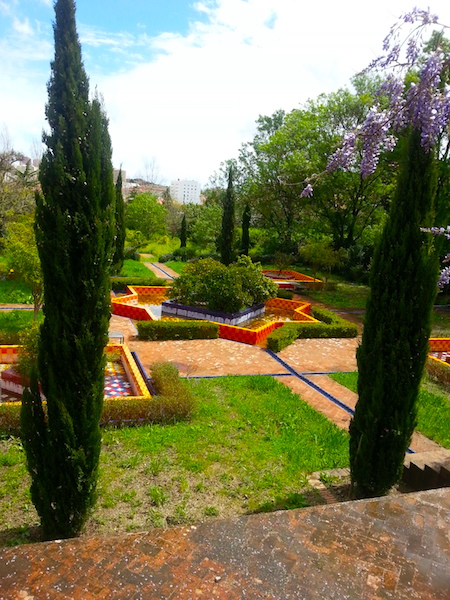
The modern garden at the Palacio Fronteira, April, 2016.
I was more taken with the stone pergola that gives access to the new garden from the formal parterre.
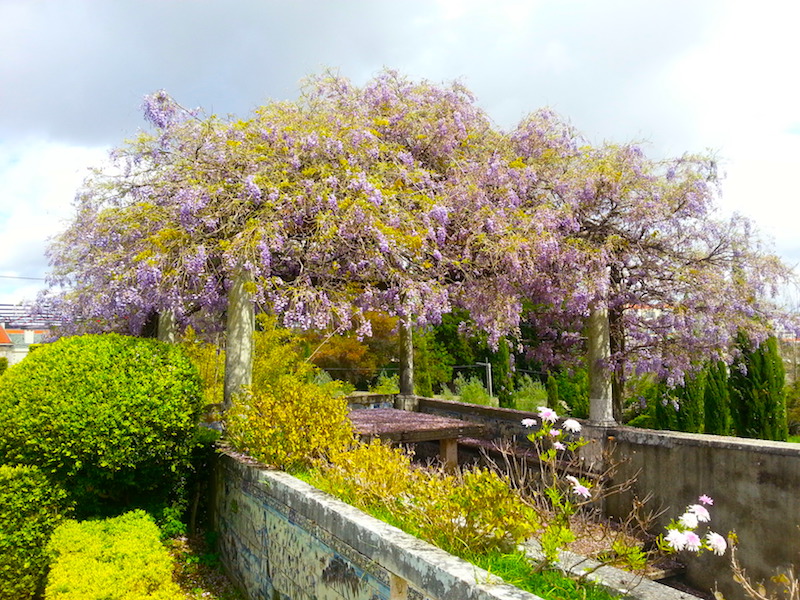
The pergola in the gardens of the Palacio Fronteira, April, 2016.
From the edge of the gardens, you can see what I take to be a disused pigeonnier.
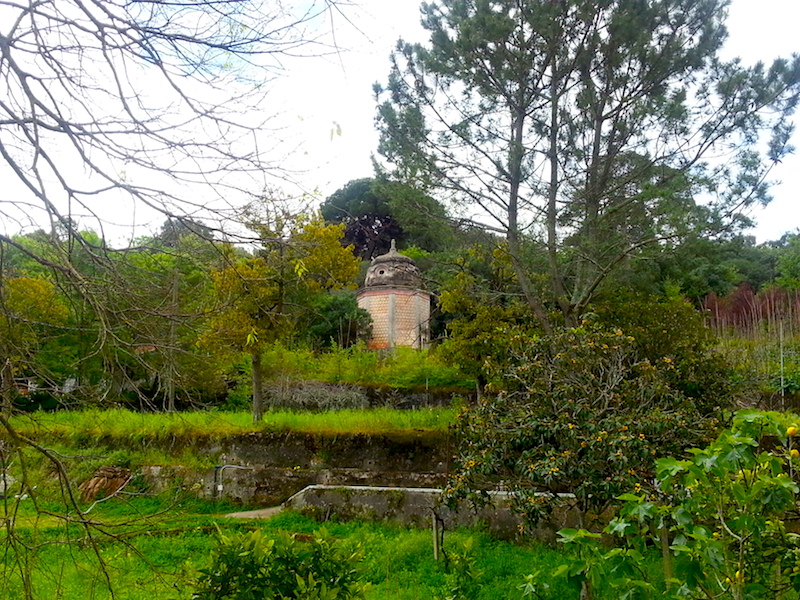
A pigeonnier in the grounds of the Palacio Fronteira, April, 2016.
Note the lemon tree in the foreground.
On the whole, the gardens and grounds have the charm as the house: they’re elegant and grand, but neither stuffy nor overwhelming.
I hope you’ve enjoyed this tour of the gardens of the Palacio Fronteira. If you haven’t already, please check out the house tour in an earlier post. Have you visited the palacio? Please share your impressions below, on our Facebook page, or under a relevant image in our gallery on Instagram (@versailles_century).







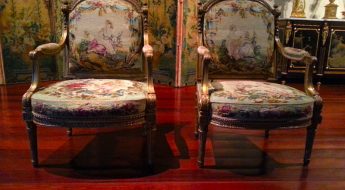
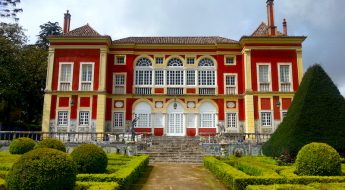
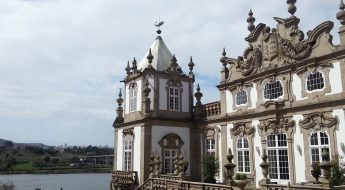








Leave a Comment